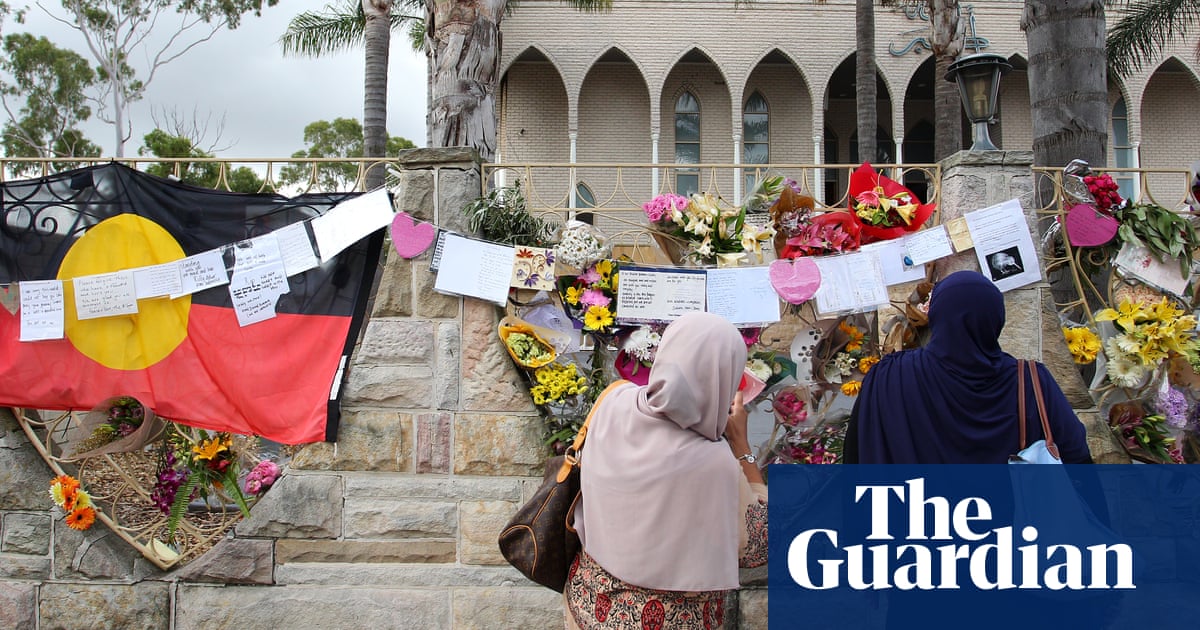
The Christchurch massacre triggered a surge of hate towards Muslim people in Australia, with women the vast majority of victims, a report has found.
The Islamophobia Register Australia (IRA) recorded a fourfold increase in reports of in person incidents of anti-Muslim hate, while reports of online incidents were 18 times higher in the two weeks after 15 March 2019, when an Australian white supremacist, Brenton Tarrant, murdered 51 people in an attack on two mosques in Christchurch, New Zealand.
The third report of its kind, Islamophobia in Australia III draws on verified incidents of anti-Muslim hate in Australia in 2018 and 2019.
Incidents recorded include that of a patient in the chair of a Muslim dentist calling all Muslims “terrorists”, a family physically assaulting a woman at the zoo, and a pregnant woman being punched repeatedly by a stranger in a cafe – a case that made news at the time.
Released on Tuesday by Charles Sturt University and the Islamic Science and Research Academy, the latest report analyses 247 incidents of Islamophobia across 2018 and 2019, 138 of which occurred in person, 109 online.
Anti-Muslim hate is deeply gendered, the data shows, with women comprising 82% of in-person victims – up from 72% in the second report and 68% in the first. Of those women, 85% were wearing hijab and 48% were alone when the attacks occurred, while 15% of them were accompanied by children. Most of the perpetrators – 74% – were male.
Security guards or cameras did not make Muslims any safer, the data suggested, as there was “no meaningful correlation” between the existence of cameras and guards and the severity of an incident.
Incidents recorded by the IRA also demonstrated that “anti-Muslim hate breaches social and professional hierarchies”.
The report’s lead researcher, Dr Derya Iner, said the sample of incidents was “the tip of the iceberg”, noting that hate crime was vastly underreported internationally and the register’s ability to collect data depended on the community’s awareness of it.
“We are not saying that this report represents everything in Australia, but this is a good sample to show manifestations of Islamophobia across Australia,” Iner said.
Muslims were associated with terrorism or portrayed as killers in 12% of cases over the first reporting period (2014-2016), but that number has risen sharply, with 39% of incidents making that association in this most recent report.
“I think this is the impact of online far-right groups. To bring people to that level of intense hate, you need to have a good excuse, and the best excuse is associating Muslims with terrorism and portraying them as killers,” Iner said, noting that this was one of the most common narratives online about Muslims after the Christchurch massacre.
In the wake of Christchurch, 40% of reported online posts, mostly on Facebook, included threats to kill Muslims, with 55% of those threatening mass killing.
Of the in-person incidents, which included both verbal and physical attacks, 63% occurred in commonly frequented places like shopping centres or on public transport.
“Muslims are attacked, harassed, among people in crowds. There is not enough social pressure on perpetrators to deter them, to prevent them doing it,” Iner said.
“Hate culture is accommodated by silence. Bystanders are around, but silent.”
Zainab Sajjad Haider, who reported an incident of Islamophobia to the register in 2019, told Guardian Australia that for every incident she reported, there would be “dozens” more that she didn’t.
Haider, born in Tamworth, converted to Islam in 2015 while in her mid-20s. Now 31, she said the change in how she was treated once she embraced her faith was profound.
“I’m a white Australian, but I lost my white privilege by putting on the hijab,” Haider said.
Haider holds a veteran’s card, as she had been training as a recruit in the Australian Defence Force before an injury prevented her from progressing with a military career.
After converting, she began carrying the veteran’s card with her whenever she left the house, “just in case someone came up to me”.
“I found that was my get out of jail free card. That was my buffer. I remember once I was getting abused in a car park and I got out the card and threw it in this guy’s face like, ‘can you read?’ and he was like, ‘I’m so sorry’,” she said.
“Obviously as a Muslim I don’t agree with our foreign policies any more, if I ever did,” Haidar said, noting the irony of her situation.
“It’s funny because the narrative of invading Afghanistan was ‘saving the women’, but usually the people who attack you here are tradies. Generally, it’s blokes. If men experience Islamophobia, usually it’s racism first. It’s only Islamophobia first if they’re very visibly Muslim.
“But with women, it’s always Islam first.”
The incident Haider reported to the IRA occurred on a train in Melbourne, when a man hissed, spat at, and verbally abused her. When the man alighted the train, she reported the incident to the protective services officers at that station, only to discover the perpetrator was notorious for harassing Muslim women.
“In Melbourne, it was only ever public transport where I was a target,” Haider said. “Every Anzac Day, Australia Day, I would try not to go into public – I would try not to be on public transport on those holidays that I know have a nationalism aspect, even though I’ve served in the army. I know I’m a target every time.”
The report’s recommendations include social media companies taking more responsibility for online hate, political leadership in standing up against hate, and clearer legal consequences for online platforms and perpetrators.
“It’s not Muslim people’s problem; it’s a society-wide problem. It can be countered by bystanders but also by systemic change,” Iner said.








